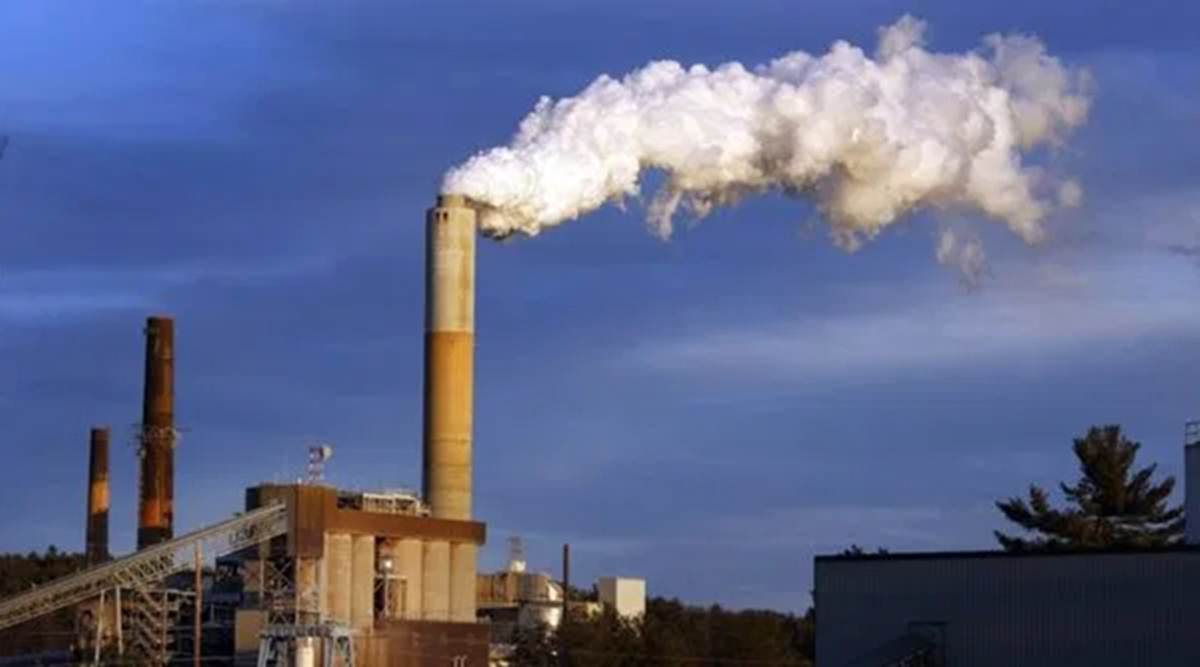 The most natural option of government intervention for reducing emissions is by fixing limits of emissions through regulation, taking into consideration the Nationally Determined Contribution targets set by the country under the Paris Agreement.
The most natural option of government intervention for reducing emissions is by fixing limits of emissions through regulation, taking into consideration the Nationally Determined Contribution targets set by the country under the Paris Agreement.Climate change is bound to impact human lives and the global economy at an exceptionally high scale in the not-so-distant future. The last Conference of Parties (CoP-26) of the UNFCCC held at Glasgow in November 2021 witnessed considerable inertia from several partner countries in committing to concrete action plans to contain global warming under the threshold of 1.5 degrees Celsius. After China and the United States, India, which releases 2.44 billion tonnes of carbon dioxide annually, is the third-largest emitter of this GHG, making it a key player in emissions reduction.
Economic growth is inextricably connected with energy consumption. The International Energy Agency’s (IEA) World Energy Outlook 2017 Report estimates that India will account for nearly one-fourth of the global energy demand by 2040. Achieving economic growth sustainably requires a strategy for reducing carbon emissions aggressively while also focusing on efficiency, equity, fairness and behavioural aspects.
As per the IEA’s India Energy Outlook 2021 Report, India’s energy system is highly dependent on fossil fuels — coal, oil and bioenergy — that supply about 90 per cent of the country’s demand. About 38 per cent of primary energy is consumed for power generation, implying that the level of electrification is still low in the country. Power generation is highly dependent on coal — about 78 per cent of it comes from this fossil fuel — and, transportation is almost entirely dependent on oil. The Indian energy ecosystem is, thus, highly carbon-intensive.
There is a consensus that climate change is a feature of market failure. Economic activities by consumers (driving or air-conditioning, for instance) and by producers (such as electricity generation and manufacturing) cause emissions, leading to pollution and global warming. These negative externalities, causing outcomes that are not efficient, are not reflected in the costs incurred by consumers or producers. In other words, the true costs to the consumers, producers and society are not reflected in the market interactions. This leads to an uncontrolled rise in emissions and also breeds apathy towards mitigation efforts. The solution to the problem of market failure calls for government intervention.
Best of Express Premium
A benefit-cost analysis of emissions reduction is based on the premise that the costs incurred by any firm — whether manufacturing items or generating power — in investing to reduce emissions have long-term benefits for society. Some firms may require lesser funds to reduce the same amount of emissions as others.
The most natural option of government intervention for reducing emissions is by fixing limits of emissions through regulation, taking into consideration the Nationally Determined Contribution targets set by the country under the Paris Agreement. But there is a flip side to this. Experts have shown that the wrongly set emission levels could lead to cost-inefficient outcomes. It makes it difficult for the regulator to obtain the information about each firm’s abatement-cost and damage-cost schedules in advance. Hence, it would not be known that for a given amount of capital, which firm will be able to reduce maximum emissions and consequently provide the highest benefit to society. Therefore, setting emission targets and regulating emissions through command and control might be good only during the initial phase of the mitigation strategy.
The carbon tax is a better option than regulating the pre-fixed levels of emissions. The marginal cost of abatement rises as the firms keep on reducing the emissions further, and the firm will stop reducing emissions and choose to pay tax at the point when the cost of abatement becomes higher than the rate of tax. This option will lead to near-efficient outcomes.
However, the possibility of the tax being either too high or too low cannot be ruled out. This problem can be addressed by introducing an auction-based carbon trading scheme. The trading scheme will bring in higher efficiency as the price of certificates will be determined by allowing firms facing low and high abatement costs to compete in the free market as per their own abatement and damage cost schedules.
An effective policy framework for emissions reduction has to be essentially rooted in the Indian energy ecosystem and be cognizant of the reasons for market failure. Large investments are needed for the transition to a green energy economy, and market-based instruments are the most efficient tools for achieving this. The emissions trading scheme will determine the optimal and cost-efficient levels of emissions reduction by providing a choice to the firms to either mitigate or trade — the net effect of this will be a reduction in emissions. The low abatement-cost firms will keep reducing emissions as they would profit by trading the certificates. In the process, they will give signals to the market about efficient capital flows and resource allocation for adopting green-tech, renewable energy, electrification and energy efficiency measures.
The issue of equity in energy access must be addressed by channelling the revenues generated from carbon pricing to households and firms impacted by the carbon trading and carbon tax — these could be through incentives or lump-sum transfers. The socio-economic impact of decarbonising the economy and the way humans live would be crucial in setting our priorities. We have limited time and our resources are scarce.
The writer is chairman, Rajasthan Tax Board and has served as Chairman Raj. Renewable Energy Corporation. Views are personal.
- The Indian Express website has been rated GREEN for its credibility and trustworthiness by Newsguard, a global service that rates news sources for their journalistic standards.

